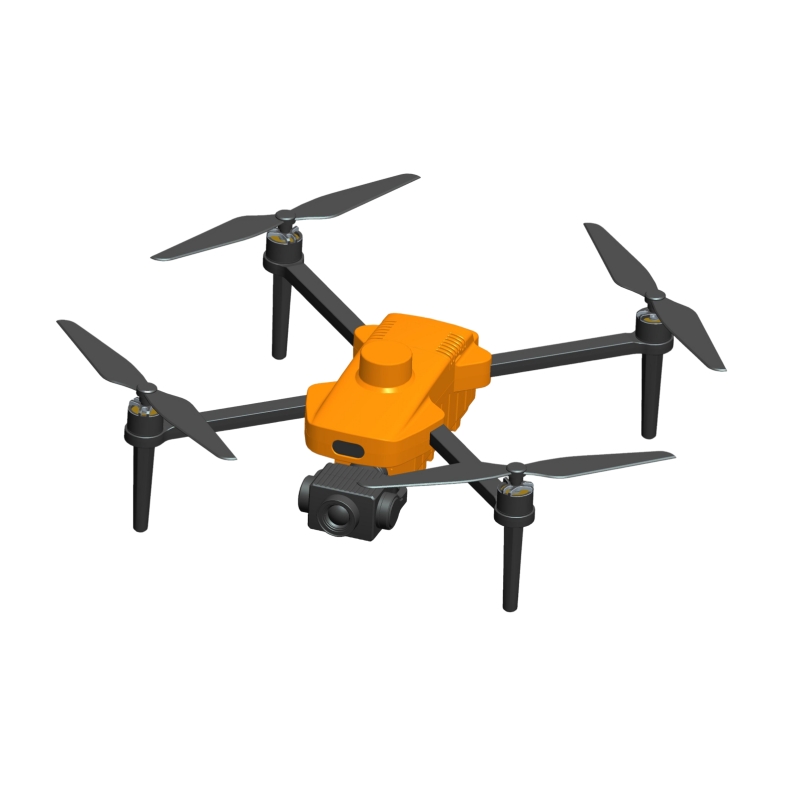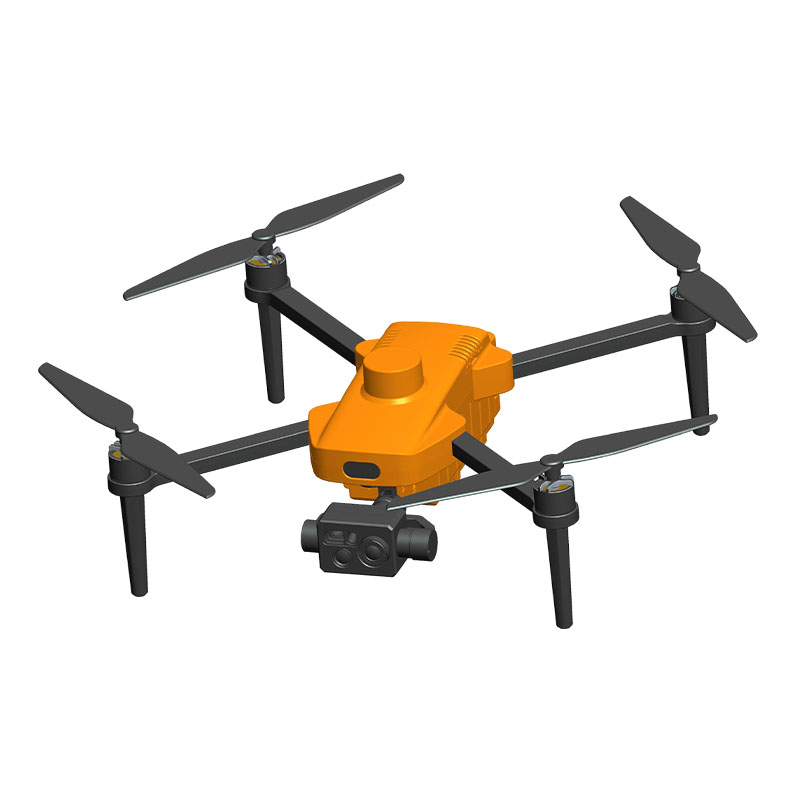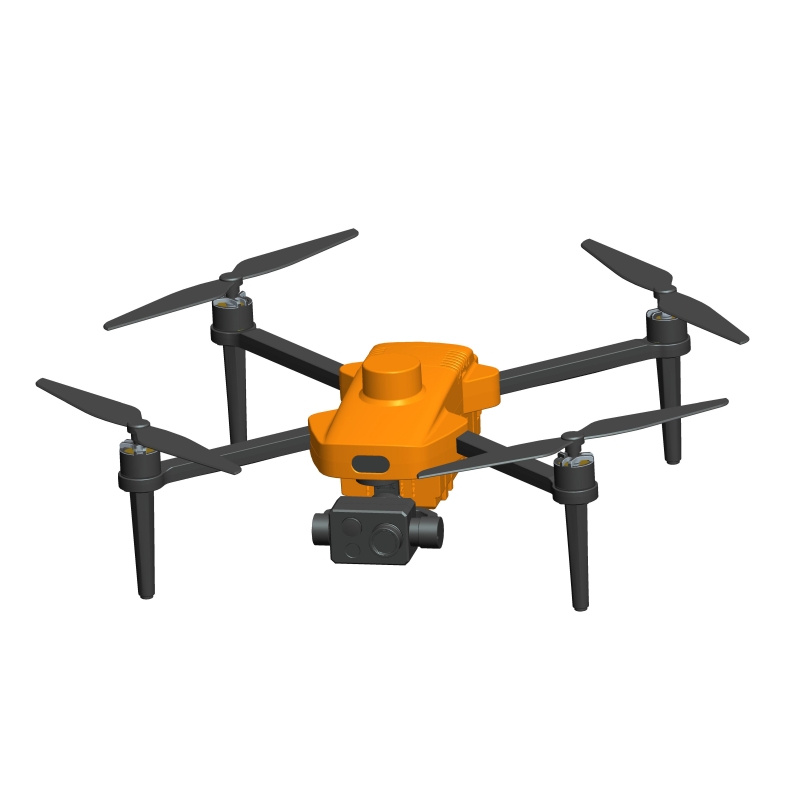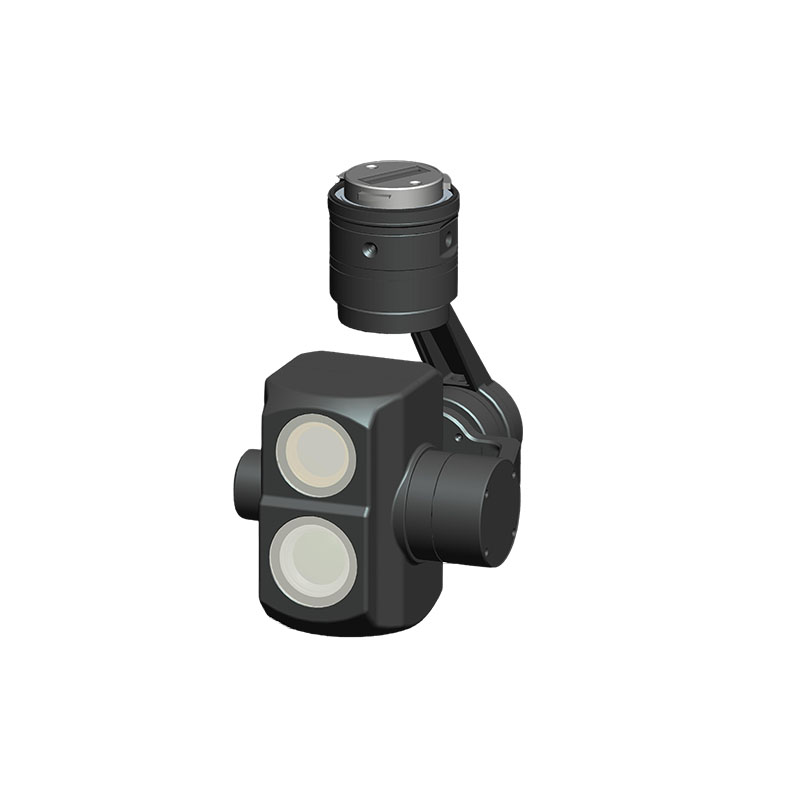The four-axis design is combined with the three-color light inspection quadcopter UAV. What are the technical highlights in terms of terrain adaptability?
Release Time : 2025-06-24
The three-color light inspection quadcopter uav with a four-axis design and three-color lights shows unique technical advantages in terrain adaptability, providing reliable guarantees for operations in complex environments. The four-axis structure gives the three-color light inspection quadcopter uav excellent flexibility and stability, and the four rotors form a symmetrical layout, which can achieve 360-degree omnidirectional flight and precise hovering. This design allows the three-color light inspection quadcopter uav to flexibly adjust its attitude when facing complex terrain such as mountains and canyons, and easily pass through narrow gaps or bypass obstacles. Compared with traditional fixed-wing three-color light inspection quadcopter uav, it is more suitable for performing inspection tasks in areas with large terrain undulations and limited space.
In environments such as mountainous areas where signals are easily interfered with, the attitude control system of the four-axis three-color light inspection quadcopter uav has been optimized. Even if it encounters airflow disturbances or wind direction changes caused by terrain, it can quickly adjust the rotor speed to maintain stable flight. This feature enables the three-color light inspection quadcopter uav to get close to the target for detailed observation when inspecting between cliffs or areas with dense vegetation, while avoiding the impact of shaking on the clarity of the shooting picture and the detection accuracy.
The three-color light system further enhances the three-color light inspection quadcopter uav's environmental perception ability in complex terrain. The combination of different colors of lights can not only assist the three-color light inspection quadcopter uav in identifying obstacles in low-light scenes, but also interact with ground operators in real time through light signals. For example, when operating in dark terrain such as caves and tunnels, the three-color light can illuminate the target area and help the three-color light inspection quadcopter uav quickly identify the environment ahead. At the same time, the light flashing mode can feedback the progress of the operation or abnormal conditions to the ground personnel, reducing communication errors.
In addition, the navigation system of the three-color light inspection quadcopter uav is closely coordinated with the four-axis design, equipped with high-precision GPS and visual positioning modules. In deep valleys or urban areas with tall buildings without satellite signal coverage, visual positioning technology can achieve centimeter-level precision autonomous navigation by identifying ground texture and features, combined with the flexible steering ability of the four-axis, to ensure that the three-color light inspection quadcopter uav flies safely along the preset route and effectively avoids navigation failure caused by terrain obstruction.
In terms of waterproof and dustproof design, the four-axis three-color light inspection quadcopter uav has been upgraded with the three-color light system for overall protection. Whether it is a humid and rainy mountain forest or a dusty desert, the three-color light inspection quadcopter uav can operate normally in harsh environments. The protective structure not only protects the internal precision electronic components, but also ensures that the three-color light continues to work stably under extreme conditions, providing reliable environmental lighting and signal indication for inspection tasks.
The power system of the three-color light inspection quadcopter uav is also optimized for complex terrain operations. The four-axis rotor motor has the characteristics of high efficiency and high torque, and can maintain stable lift output in high altitude and low pressure environments. Even in a strong wind environment caused by the terrain, the motor can quickly respond to the need for attitude adjustment, ensuring the smooth flight of the three-color light inspection quadcopter uav, extending the flight time, and meeting the needs of long-distance inspections in complex terrain.
The combination of the four-axis design and the three-color light system comprehensively improves the adaptability of the three-color light inspection quadcopter uav in complex terrain from multiple dimensions such as flight performance, environmental perception, navigation capabilities, protection standards, and power systems. This technical integration not only expands the application boundaries of the three-color light inspection quadcopter uav, but also provides more efficient and safer inspection solutions for fields such as electricity, forestry, and emergency rescue.







